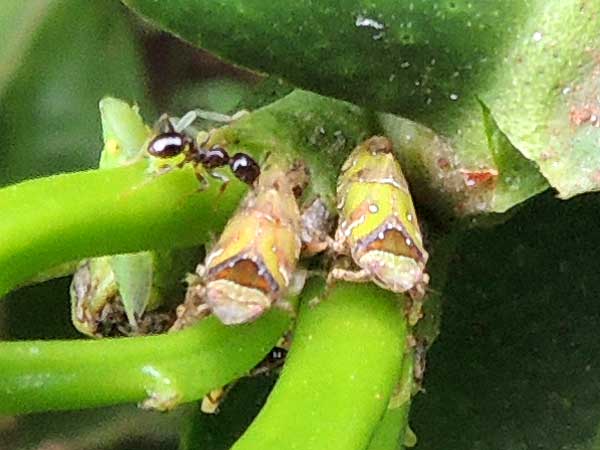Citrus Leafhopper

Observed in Moshi, Tanzania. December 2013. Host is cultivated orange, Citrus × sinensis. Notice the myrmicine ant which will get honey dew from the hoppers and protect them. Another smaller, green nymph leafhopper can be seen behind and to the left of the ant.
Leafhoppers are a very large group of insects comprising thousands of species. Some are brightly colored while others are cryptic in the pattern. Their bullet shape is highly aerodynamic allowing these bugs to slice through viscous air once the third pair of legs lets loose a saltatorial kick. The eyes are conspicuously large.
Leafhoppers, like all true bugs, feed by inserting their stylet mouthparts into plant tissue and with a powerful pump extract the phloem and other plant fluids. This is analogous to the feeding mechanism of mosquitoes, and like mosquitoes they can vector diseases - in this case plant pathogens, harmless to people, but potentially devastating to farmers. Absent disease the damage may appear like minute, pale stippling on the leaves or wilted growing tips. Because the bugs are so small, they might go unnoticed except for their signs.